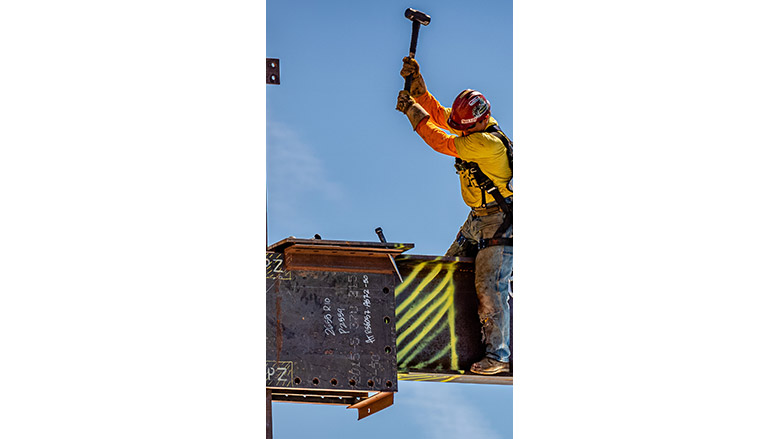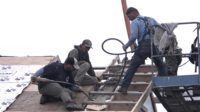Related Link:
ENR's 2022 Year in Construction Photos
At a time when an aggressor is bombing cities to rubble, the construction of new buildings is a potent symbol of peace and commerce.
While most people who write about the construction business may never watch the framing of a new structure from the vantage point of the ironworkers on the open steel, there are other ways to get to know the crews and how they regard what they do.
Tara Garner, the photographer who took the image of ironworker Rick Webster above, has two older brothers who are also union ironworkers. One of them, Jesse, a member of Local 433, was featured in a video about what he likes to bring onto a jobsite. One tool he says he carries is a small spud crescent wrench, which gets “made fun of” because ironworkers on big structures “don’t think you have to carry a cute little tool like this” until they ask to borrow it.
Attached to the inside of the ironworker’s hardhat, he adds, is a load chart “to know how to attach all our rigging devices” to the heavy things that have to be moved and “be able to calculate that or look at a chart as a reference.” Also with him is a watch to keep track of the time near the end of a shift or the length of a break consistent with the union collective bargaining agreement, and a serrated knife to cut hand lines when needed.
Other members of Local 433 can also be found on YouTube, including Mark Palmer, who spoke in one video several years ago about how the crew he led was organized on one of the tallest skyscrapers in Los Angeles.
He notes that in his “raising gang,” it was “the two connectors who put the iron together in the air. What you look for in a connector is fast hands.”
There are other surprising ironworker videos on the internet that aren’t part of Local 433, such as a boisterous first day of apprentice training at Local 7 in Boston where safety harnessed apprentices are asked to try to climb a column to the ceiling of the training center.
If the photos in this special yearly issue of ENR pique your curiosity, we urge you to further investigate construction work.
The first thing that may jump out at you is the skill and know-how needed by ironworker raising gangs. Any ironworker in any task must have core training about materials, equipment, rigged loads and tools, as well as experience working in extreme conditions. We all know it can be dangerous work by the nature of what is done.
Just don’t mistake the raising gang’s acceptance of hazards as foolhardy. Ironworkers’ forbearance of danger is a product of training and pride in their work.





Post a comment to this article
Report Abusive Comment